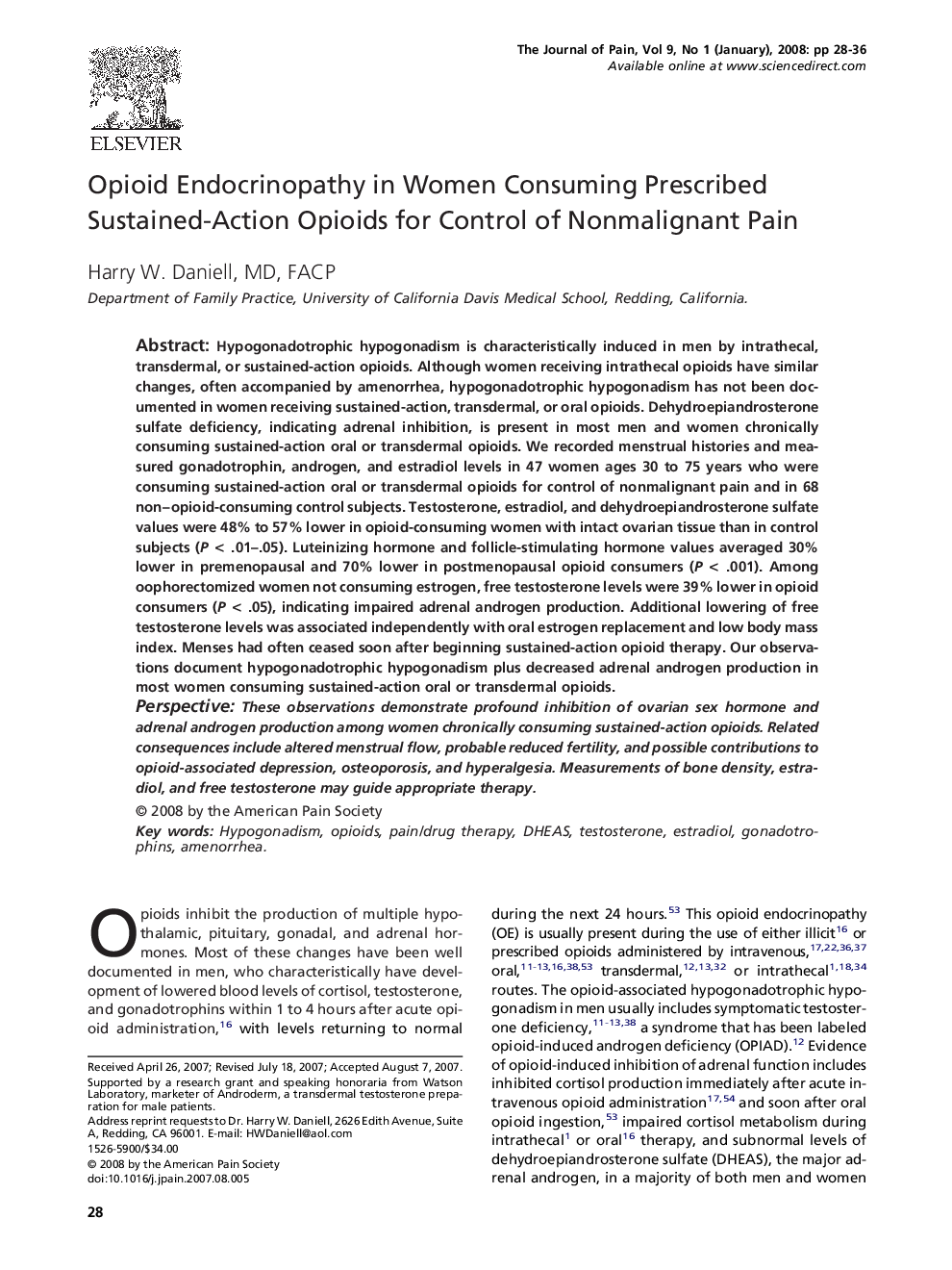| کد مقاله | کد نشریه | سال انتشار | مقاله انگلیسی | نسخه تمام متن |
|---|---|---|---|---|
| 2723672 | 1566832 | 2008 | 9 صفحه PDF | دانلود رایگان |

Hypogonadotrophic hypogonadism is characteristically induced in men by intrathecal, transdermal, or sustained-action opioids. Although women receiving intrathecal opioids have similar changes, often accompanied by amenorrhea, hypogonadotrophic hypogonadism has not been documented in women receiving sustained-action, transdermal, or oral opioids. Dehydroepiandrosterone sulfate deficiency, indicating adrenal inhibition, is present in most men and women chronically consuming sustained-action oral or transdermal opioids. We recorded menstrual histories and measured gonadotrophin, androgen, and estradiol levels in 47 women ages 30 to 75 years who were consuming sustained-action oral or transdermal opioids for control of nonmalignant pain and in 68 non–opioid-consuming control subjects. Testosterone, estradiol, and dehydroepiandrosterone sulfate values were 48% to 57% lower in opioid-consuming women with intact ovarian tissue than in control subjects (P < .01–.05). Luteinizing hormone and follicle-stimulating hormone values averaged 30% lower in premenopausal and 70% lower in postmenopausal opioid consumers (P < .001). Among oophorectomized women not consuming estrogen, free testosterone levels were 39% lower in opioid consumers (P < .05), indicating impaired adrenal androgen production. Additional lowering of free testosterone levels was associated independently with oral estrogen replacement and low body mass index. Menses had often ceased soon after beginning sustained-action opioid therapy. Our observations document hypogonadotrophic hypogonadism plus decreased adrenal androgen production in most women consuming sustained-action oral or transdermal opioids.PerspectiveThese observations demonstrate profound inhibition of ovarian sex hormone and adrenal androgen production among women chronically consuming sustained-action opioids. Related consequences include altered menstrual flow, probable reduced fertility, and possible contributions to opioid-associated depression, osteoporosis, and hyperalgesia. Measurements of bone density, estradiol, and free testosterone may guide appropriate therapy.
Journal: The Journal of Pain - Volume 9, Issue 1, January 2008, Pages 28–36